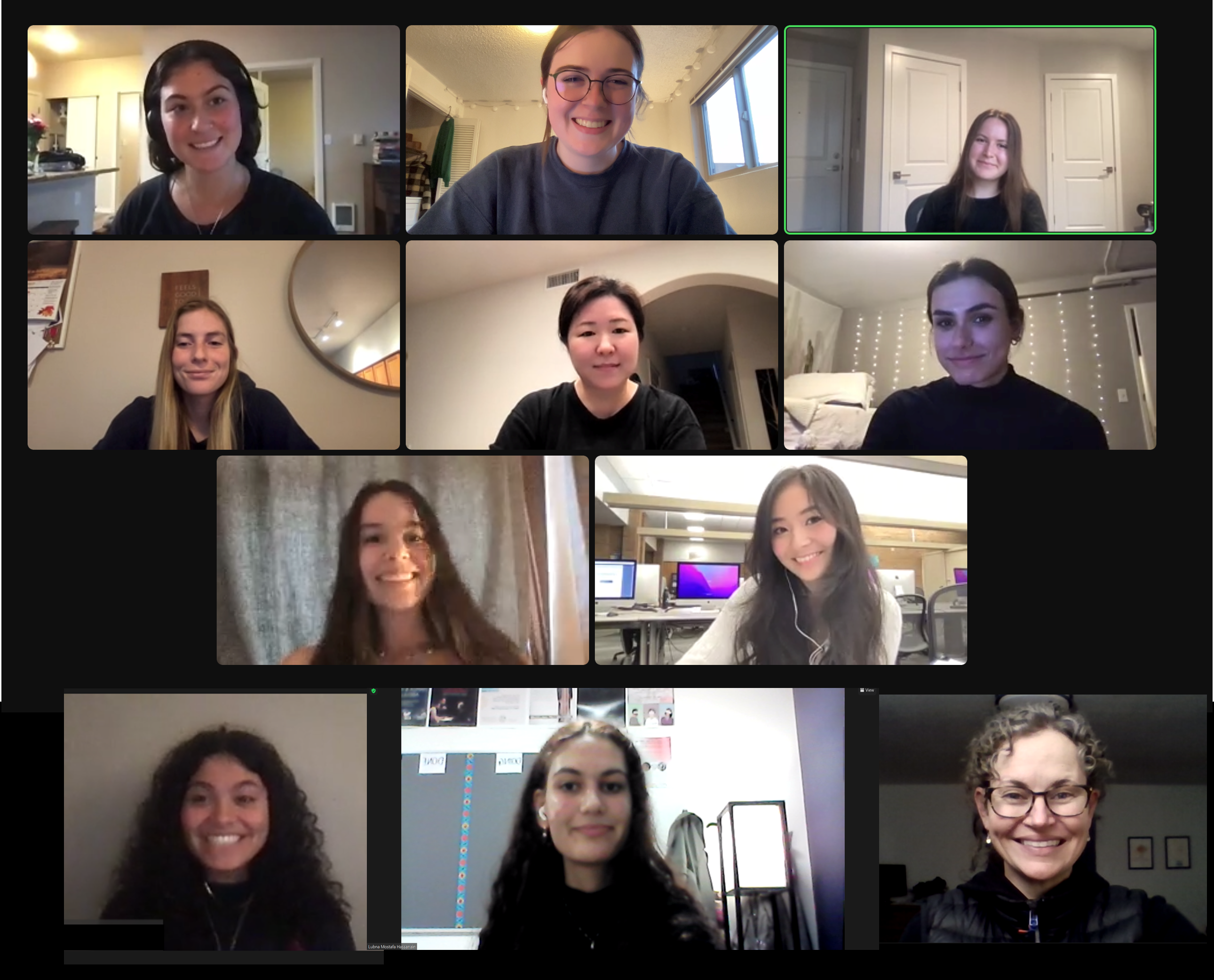Authors:
- Elli Theobald, she/her, Assistant Teaching Professor, Biology, University of Washington, Seattle campus
- Madison Meuler, she/her, graduate student, College of Education, University of Washington, Seattle campus
- Katie Foutch, she/her, graduate student, College of Education, University of Washington, Seattle campus
- Jiae Lee, she/her, postdoc, Department of Biochemistry, University of Washington, Seattle campus
- Noor Al-Khayat, she/her, undergraduate student, Department of Biology, University of Washington, Seattle campus
- Katerina Boukouzis, she/her, undergraduate student, Department of Biology, University of Washington, Seattle campus
- Pryia Christensen, she/her, undergraduate student, Department of Biology, University of Washington, Seattle campus
- Carmella Crooks, she/her, undergraduate student, Department of Biology, University of Washington, Seattle campus
- Lubna Hassanain, she/her, undergraduate student, Department of Biology, University of Washington, Seattle campus
- Parnian Karimi, she/her, undergraduate student, Department of Biology, University of Washington, Seattle campus
- Galina V. Kim, she/her, undergraduate student, Department of Biology, University of Washington, Seattle campus
- Alyssa Randall, she/her, undergraduate student, Department of Biology, University of Washington, Seattle campus
- Ingrid K. Redford, she/her, undergraduate student, Department of Biology, University of Washington, Seattle campus
- Rita Socko, she/her, undergraduate student, Department of Biology, University of Washington, Seattle campus
Project Question
To what extent do six of the most prominent introductory biology textbooks in the U.S. include humanizing science content? We define humanization as the act of positioning science in a social context and the act of discussing science through the lens of justice and/or injustice. This study aims to characterize and quantify the extent to which introductory textbooks explicitly make justice/injustice visible within the context of biology.
Context
Science is often taught as an objective, apolitical field. As pushback, scholars have proposed a shift to culturally relevant and/or culturally sustaining pedagogy. A key tenant of this pedagogy is a focus on developing a students’ sociopolitical consciousness, or their ability to use knowledge to “identify, analyze, and solve real-world problems”. Thus, fostering a sociopolitical consciousness amongst students and make justice/injustice visible within curricula is an act of humanization.
Methods
To test our hypotheses, we first built consensus on what it means to humanize biology by iteratively revising a coding protocol. Our rubric evaluates the quantity, location, and the nature of humanizing passages within textbooks. The rubric positions passages relative to each other on a continuum of humanization: At one end, a humanizing passage has scarce elements of humanization, at the other end of the continuum, a passage positions biology as a mechanism to achieve justice. In the middle, a passage has some detail, provides nuance to a topic, or mentions equity or inequity. Once the continuum was established, we collected data through qualitative coding: each chapter of each textbook was coded by two coders who came to consensus.
Impact/Assessment
In total, in the 343 chapters (9670 pages), we found 1351 passages with humanizing content. Of the passages with humanizing elements, only 5% mentioned equities/inequities and 4% included a discussion of justice. More than half (54%) included some amount of detail but only 9% included enough detail such that the discussion felt nuanced. For example, a nuanced passage may include both costs and benefits of the topic:
“On the one hand, being able to study the genome of the virus…may lead to more effective vaccines and help prevent future pandemics. [However], critics…claim that the vague potential benefits of recreating the virus are not worth the risk should an unfortunate or negligent scientist accidentally or deliberately release the virus.”
When textbooks included humanizing elements, they were most likely to use single (23%) or multiple sentences (61%); rarely did humanizing passages span multiple paragraphs (13%) and only a few times were whole sections dedicated (2%).
Many of the passages (26%) covered multiple topics. The topics that were most commonly represented among the humanizing passages included environmental topics (25%), disease (15%), nutrition and sustenance (12%), health generally (12%), and treatment of disease (11%). Human genetics (6%), climate change (6%), science as a discipline (5%), and Ethics (5%) were more uncommon topics of humanizing passages, and multiple ways of knowing was a topic that was rarely found in humanizing passages (2%).
Application
This list of recommendations is not exhaustive, rather, highlights strategies and questions instructors can ask themselves as they are developing their curriculum.
If instructors seek to move up the continuum, to deliver a more humanizing curriculum, they could…
- Provide the social context of the topic or discovery and discuss it with detail and/or nuance. The social context of the discovery may expose a dark underbelly of science, but when done well, this can reinforce that science is rarely apolitical.
- Highlight the uneven impacts of or access to scientific knowledge. For example, discussions of climate change could include that the largest contributors to greenhouse gas emissions are rarely the largest bearers of the costs of emissions.
- Adopt a “problem-posing” model of science education by explicitly presenting students with problems of justice and asking students to reflect on how science can and should address these issues.
- Discuss the ethics, for example of an experimental design, of the application of a discovery, etc. By inviting students to use their moral compass to interrogate scientific questions students have opportunities to practice developing their sociopolitical consciousness within the context of their discipline.
Additional Resources
Here we present what we believe is the most comprehensive assessment of humanizing elements in introductory biology textbooks and pair that with guidance to instructors who seek to include humanizing elements in their classes. Humanizing biology curricula holds the potential to help solidify students’ feeling of rightful presence within the classroom by making present “the intersections of contemporary in(justices), while orienting towards new, just social futures.”
